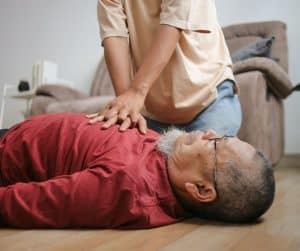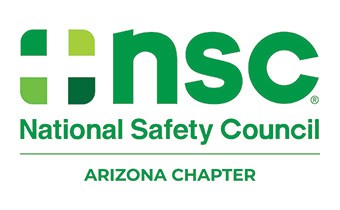
The holidays are a time for celebrations and gatherings. They’re also a time for stress, overindulgence, and physical exertion. That mix can raise the risk of emergencies at home, including cardiac arrest. If a loved one stops breathing or their heart stops, every second matters. Knowing CPR (Cardiopulmonary Resuscitation) helps you protect the people you care about most.
“People hesitate because they think they’ll hurt the person or be too nervous to act,” says Ed Taube, lead trainer for Arizona Chapter National Safety Council, a nonprofit safety advocate, “but if you can provide chest compressions hard and fast, about two per second, you could save a life. Training gives you a clear script. Doing nothing is worse.”
Holiday Risk Factors
Stress and anxiety can stack up from travel, schedules, and money pressures. That strain pushes blood pressure higher and makes the heart work harder. Celebrations often include heavy meals and more alcohol. Extra salt and fat raise blood pressure. Too many drinks can trigger dangerous rhythms or aggravate heart conditions. These factors can elevate the likelihood of a cardiac event.
Why CPR at Home Matters
Most cardiac arrests happen at home. Early CPR keeps blood flowing to the brain and vital organs until professionals arrive. Those first few minutes can shape the outcome.
Warning signs to act on:
-
- The person collapses and does not respond.
- Breathing is absent or abnormal.
- Skin looks pale or bluish.
Call 911, put the phone on speaker, and start compressions.
Compression basics:
-
- Push hard and fast in the center of the chest.
- Aim for 100 to 120 compressions per minute.
- Let the chest rise between pushes.
- Do not stop until an AED is ready, another trained person takes over, or professionals arrive.
AEDs, Explained
An AED is an Automated External Defibrillator. It analyzes the heart’s rhythm and, if needed, gives a shock to help restore a normal beat. You turn it on and follow the prompts.
Where you will see AEDs:
-
- Public places, such as airports, gyms, malls, offices, and schools.
- Many homes now have AEDs, especially when a family member has heart risk.
Tips for public and home AEDs:
-
- In public, send someone to get the AED while you start CPR.
- At home, store the AED in a central spot and check the pads and battery on schedule.
- Open the lid, turn it on, and follow the voice instructions. Do not guess. The AED guides you.
Holiday Offer
ACNSC is offering $20 off its in-person CPR, First Aid, and AED Standard Course through the end of 2025 at its Phoenix and Las Vegas locations. Members and non-members get the discount. Regular price is $95 for members and $105 for non-members. No promo code needed.
See dates, details, and register at: https://shop.acnsc.org/course/3/fa-cpr-aed-standard-course
